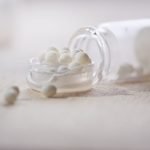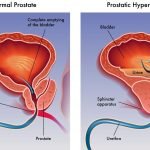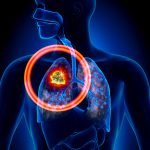The Selenium and Vitamin E Cancer Prevention Trial
Neither selenium nor vitamin E reduces the risk of prostate cancer
Jacob Schor, ND
In a recent publication of their analysis of the Selenium and Vitamin E Cancer Prevention Trial (SELECT) data, Klein et al1 suggested that daily doses of selenium or vitamin E reduce the risk of prostate cancer. Taking vitamin E may actually increase the risk. This has me questioning some of the basic assumptions I make about cancer prevention and our use of nutritional supplements.
Before drifting off into the murky realms of my ruminations, it is appropriate to briefly review the study by Klein et al.1 From August 2001 to June 2004, a subsample (n = 34 887) among 35 533 men were randomized into 1 of 4 study groups. One group of 8752 men took selenium (200 μg/d from l-selenomethionine). A second group of 8737 men took vitamin E (400 IU/d of all rac-α-tocopheryl acetate). A third group of 8702 men took both selenium and vitamin E. The remaining 8696 men received placebo. At the start of the study, the men were healthy, with no sign of prostate cancer (prostate specific antigen level of ≤4.0 ng/mL and normal findings on digital rectal examination). Data were collected until July 2011. The main outcome measure was whether the men were diagnosed as having prostate cancer during the course of the trial.
The study1 yielded unexpected results. Only 529 men taking placebo developed prostate cancer, but 620 men taking vitamin E did. Vitamin E use was associated with a statistically significant 17% increase in the risk of prostate cancer (hazard ratio [HR], 1.17; 99% CI, 1.00-1.36; P = .008). More men in the selenium group and in the vitamin E plus selenium group were also diagnosed as having cancer, but these increases did not reach statistical significance. In the selenium group, 575 men were diagnosed as having prostate cancer (HR, 1.09; 99% CI, 0.93-1.27; P = .18). In the vitamin E plus selenium group, 555 men received the diagnosis (HR, 1.05; 99% CI, 0.89-1.22; P = .46). This is not what the researchers were expecting to see. Their assumption was that both selenium and vitamin E would lower the risk of prostate cancer.
The study by Klein et al1 is not the only recent publication to suggest that vitamin E acts differently than predicted. Last June in the Journal of Clinical Oncology, Fleshner et al2 reported on their work using vitamin E, soy, and selenium or a combination of these supplements on high-grade prostatic intraepithelial neoplasia. This condition is considered the precursor of invasive prostate cancer. Three hundred men were followed up for 3 years in a randomized phase 3 double-blind study comparing the effects of daily soy (40 g), vitamin E (800 U), and selenium (200 μg) vs placebo. Slightly more than one-quarter of the study participants developed invasive prostate cancer. The HR of those taking the supplements was 1.03 (95% CI, 0.67-1.60; P = .88). This was not significantly different from the HR of those taking placebo.
Thus, in the last 6 months, we have 2 fairly solid clinical trials1,2 telling us that 2 supplements we were fairly sure would be of benefit do no good. We have been in a similar quandary before. The SELECT is another large long-term randomized placebo-controlled study on antioxidants and cancer that produced the opposite result of what was expected. Instead of lowering the risk, supplements use increased the risk of prostate cancer.
This is reminiscent of the Beta-Carotene and Retinol Efficacy Trial (CARET).3,4 Instead of proving that beta carotene and vitamin A lowered the risk of lung cancer in smokers, the trial found the opposite results.
In 1991, when the CARET first got under way, the theory was simple: individuals who eat more fruits and vegetables have a lower risk of developing cancer. It was assumed that the beta carotene in these foods provided protection. The trouble was that the study participants who took the 30 mg/d dosage of beta carotene had a 36% (95% CI, 1.07-1.73; P = .01) higher relative risk of developing lung cancer than those who took placebo.4 The relative risk of death from lung cancer increased by 59% (95% CI, 1.13-2.23; P = .01).
Our learned colleagues (eg, Geo Espinosa, ND5) have already looked at the current results from the SELECT and have found excuses for the failure to find benefit. Back in the days of the CARET, we pointed out that the beta carotene chosen was synthetic, not natural. In the SELECT, we will now excuse its failure because the wrong type of vitamin E was used: participants took a synthetic form of alpha tocopherol instead of either the more favored d-alpha form or, perhaps even better, gamma tocotrienols.6
Thus, we could say that all the SELECT proved is that synthetic vitamins do not work. This is a plausible explanation, and it reads well. I have another explanation, which may border on blasphemy. Instead of finding excuses for studies that do not support what we believe, let us ponder some of our basic assumptions.
Our basic assumption is that oxidative damage to DNA leads to cancer and that prevention of this from occurring should prevent cancer. From there, it is a short leap to the idea that daily doses of antioxidant vitamins will prevent cancer. That short leap is where we may have stumbled.
In the SELECT, participants took 400 IU/d of vitamin E, while those in the study by Fleshner et al2 took twice that amount. These are large amounts of vitamin E, more than a person would ever get from a healthy diet.
Wheat germ oil is the most concentrated dietary source of vitamin E, with levels as high as 1276 µg/g.7 To obtain 400 IU/d of vitamin E, a person would need to consume more than a cup of wheat germ oil per day.
While it makes sense that a vitamin E deficiency may leave the cells more vulnerable to oxidative damage, where did the idea to use megadoses like these come from? This approach sounds more pharmaceutical than naturopathic. We have no naturopathic principle that says “more melius [more is better].” Why would we think these doses of vitamin E would stimulate the vis medicatrix naturae? Why are we defending their use?
While we still may want to believe that selenium and vitamin E should prevent prostate cancer, a review article in the June 2011 issue of Family Practice concluded: “There is no convincing evidence that the use of supplemental multivitamins or any specific vitamin affects the occurrence or severity of prostate cancer.”8(p243)
Let us return to the original assumption that antioxidants protect against cancer. When this idea first appeared, the concept of apoptosis was still years in the future. I now view cell chemistry as a constantly shifting balance between reactive oxygen species (ROS) and glutathione. While ROS can cause damage, they also initiate apoptosis and are the agents by which the cell commits suicide. Without apoptosis, cells that are becoming cancerous cannot self-destruct. Could vitamin E limit apoptotic cell death? Although an intriguing thought, the medical literature does not support this idea, at least not yet.
But think about it for a moment. The published research looks at short-term reactions and responses to supplements using in vitro or animal studies. In cell culture studies, exposure to vitamin E is often for only 48 or 72 hours.9 In animal studies, vitamin E dosing may go on for a week or more. What happens when an organism like a middle-aged man is exposed to massive doses of vitamin E for years? Might the organism adapt to this constant level of vitamin E?
Living things respond and adapt to the conditions in which they live. They respond to stress and hardship by becoming hardier and better able to tolerate these insults. In our practices as NDs, we often attempt to trigger these “adaptive responses” for therapeutic benefit. Our therapies, benign as they may seem, trigger physiological overreacting, stronger adaptive responses than warranted, but lead to greater repair on a cellular level and restoration of homeostasis on a systemic level. Hydrotherapy, fasting, and botanical medicines as used in naturopathic practice all work this way to benefit the patient by eliciting adaptive responses.
Yet adaptive responses work both ways. Easing the stresses on an organism over the long run may reduce its capacity to respond to stress. Raise a plant in a controlled environment free from insect attack, with controlled temperatures and plenty of fertilizer, and the result will be a larger plant but with lower concentrations of phytonutrients.
Could long-term high-dose antioxidant supplementation in humans do the opposite of what we anticipate by reducing the body’s capacity to respond to oxidative stress? Extreme exercise is often used as a research model for oxidative stress. Athletic exertion causes tissue injury and raises ROS in the muscles and in the body in general. Thus, it is valuable to consider some of the studies that have looked at antioxidant supplementation in athletes.
It has been thought that athletes should take antioxidant vitamins to protect their bodies from the damage of ROS. Whether this really makes a difference is now questioned. In 2003, Urso and Clarkson stated: “Whether strenuous exercise does, in fact, increase the need for additional antioxidants in the diet is not clear.”10(p41)
McGinley et al also raised this concern in their 2009 review article on the use of high-dose antioxidants by athletes: “Indeed, antioxidant supplementation may actually interfere with the cellular signalling functions of ROS, thereby adversely affecting muscle performance.”11(p1011)
In some investigations, supplementation with antioxidants before exercise bouts appears to prevent muscle damage and reduce soreness. However, it is less clear whether this benefits endurance or strength performance.12
Reducing oxidative stress from exercise may not be a good thing. Regular exercise, at least in rats, upregulates glutathione levels and reduces the generation of ROS, decreasing oxidative stress. Mild oxidative stress elicited by regular exercise elicits a hormetic effect. The beneficial actions of exercise may result from its adaptive upregulation of various antioxidant mechanisms, including antioxidative enzymes and repair enzymes that protect and repair molecules from damage.13 The health benefits of exercise may actually stem from the oxidative damage that exercise causes.
In 2008, Gomez-Cabrera et al14 suggested that athletes taking vitamin C were hindering the normal increase in mitochondria that was promoted by training-triggered oxidative damage. They further conjectured that this prevented athletes’ endurance levels from increasing with training. However, in March 2011, Roberts et al15 stated that this is not true in their article “Vitamin C Consumption Does Not Impair Training-Induced Improvements in Exercise Performance.”
The ruminating mind should wonder, if vitamin C could interfere with adaptive responses over the short term, whether high doses of vitamin E might do something similar over the long run? In particular, might these chronic high doses hinder the triggering of some ROS-elicited mechanism that would normally protect against prostate cancer?
In the midst of these ruminations, a September 2011 article by Greenlee et al16 provided additional data for us to chew on. These authors, all from Columbia University in New York City, were addressing the long-standing debate about the use of antioxidant vitamins during cancer chemotherapy and radiation therapy. The association between antioxidant use after breast cancer diagnosis and outcomes was examined in 2264 women in the Life After Cancer Epidemiology (LACE) cohort. About 81% of the women reported using antioxidant supplements after diagnosis. Frequent use of vitamin C and vitamin E was associated with a decreased risk of breast cancer recurrence, a 27% (HR, 0.73; 95% CI, 0.55-0.97) reduction for vitamin C use and a 29% (HR, 0.71; 95% CI, 0.54-0.94) reduction for vitamin E use. Vitamin E use was associated with a 24% (HR, 0.76; 95% CI, 0.58-1.00) decreased risk of all-cause mortality. This supports the idea that antioxidant supplementation protects healthy tissue during the highly oxidative processes of cancer treatment. However, those women in the LACE cohort supplementing with carotenoids, such as beta carotene, were at greater risk of breast cancer recurrence. Carotenoid use was associated with more than double the risk of death from breast cancer (HR, 2.07; 95% CI, 1.21-3.56). The risk of all-cause mortality increased by about 75% (HR, 1.75; 95% CI, 1.13-2.71).
Are any of my wild thoughts true? Time will tell. My faith in antioxidants and the idea that more is better has certainly been shaken. I am paying attention to which forms of antioxidants patients take and am being fussy about it, anticipating that therein lies the problem. In doing so, I have become acutely aware of the prominent place the term antioxidant has in public opinion. If a supplement or food can lay claim to “antioxidant” status, it is immediately considered “healthy,” and the greater its oxygen radical absorbance capacity score, the higher the pedestal we place it on. What if this veneration is misplaced? What if the real goal is some balance between ROS and antioxidants? Or is it going to be specific phytonutrients that exist in close proximity to these “vitamins” in nature that will someday be identified as the real actors in this drama? Blasphemy it seems, but not really.
While our profession seems to be as caught up as the general public in this antioxidant worship, remember this is not really our creed. Nowhere in the tradition of nature cure or in our principles of practice do we find antioxidants elevated. This credo is relatively new, a theory we took on from medical researchers and theorists. We should be careful about clinging to it too tightly. In the end, our role as NDs is to stimulate the vis medicatrix naturae. If massive doses of vitamin E do so, then great. Somehow, I have a hard time seeing it this way.
Jacob Schor, ND, FABNO is a 1991 graduate of NCNM and has practiced in Denver for the past 17 years. He served as president of the CANP from 1992 to 1999. He has served on the board of directors of the OncANP since 2006 and currently acts as secretary to the board. He is a Fellow of the ABNO. He was utterly shocked and humbled at the 2008 convention of the AANP to be presented with the Vis Award, an honor bestowed in the memory of William Mitchell. He is incredibly lucky to practice with his wife, Rena Bloom, ND. Dr. Schor writes newsletters for his patients that are popular with doctors and students. Visit www.DenverNaturopathic.com. Contact him at [email protected].
References
1. Klein EA, Thompson IM Jr, Tangen CM, et al. Vitamin E and the risk of prostate cancer: the Selenium and Vitamin E Cancer Prevention Trial (SELECT). JAMA. 2011;306(14):1549-1556.
2. Fleshner NE, Kapusta L, Donnelly B, et al. Progression from high-grade prostatic intraepithelial neoplasia to cancer: a randomized trial of combination vitamin-E, soy, and selenium. J Clin Oncol. 2011;29(17):2386-2390.
3. Omenn GS. CARET, the Beta-Carotene and Retinol Efficacy Trial to prevent lung cancer in high-risk populations. Public Health Rev. 1991-1992;19(1-4):205-208.
4. Omenn GS, Goodman GE, Thornquist MD, et al. Risk factors for lung cancer and for intervention effects in CARET, the Beta-Carotene and Retinol Efficacy Trial. J Natl Cancer Inst. 1996;88(21):1550-1559.
5. Espinosa G. Selenium and Vitamin E Cancer Prevention Trial (SELECT) and the risk of prostate cancer. Nat Med J. November 1, 2011. http://www.naturalmedicinejournal.com/article_content.asp?edition=1§ion=3&article=266. Accessed December 7, 2011.
6. Wada S. Cancer preventive effects of vitamin E [published online ahead of print April 5, 2011]. Curr Pharm Biotechnol. Medline:21466429
7. Herting DC, Drury EJ. Vitamin E content of vegetable oils and fats. J Nutr. 1963;81:335-342.
8. Stratton J, Godwin M. The effect of supplemental vitamins and minerals on the development of prostate cancer: a systematic review and meta-analysis. Fam Pract. 2011;28(3):243-252.
9. Har CH, Keong CK. Effects of tocotrienols on cell viability and apoptosis in normal murine liver cells (BNL CL.2) and liver cancer cells (BNL 1ME A.7R.1), in vitro. Asia Pac J Clin Nutr. 2005;14(4):374-380.
10. Urso ML, Clarkson PM. Oxidative stress, exercise, and antioxidant supplementation. Toxicology. 2003;189(1-2):41-54.
11. McGinley C, Shafat A, Donnelly AE. Does antioxidant vitamin supplementation protect against muscle damage? Sports Med. 2009;39(12):1011-1032.
12. Clarkson PM, Thompson HS. Antioxidants: what role do they play in physical activity and health? Am J Clin Nutr. 2000;72(2)(suppl):637S-646S.
13. Goto S, Naito H, Kaneko T, Chung HY, Radák Z. Hormetic effects of regular exercise in aging: correlation with oxidative stress. Appl Physiol Nutr Metab. 2007;32(5):948-953.
14. Gomez-Cabrera MC, Domenech E, Romagnoli M, et al. Oral administration of vitamin C decreases muscle mitochondrial biogenesis and hampers training-induced adaptations in endurance performance. Am J Clin Nutr. 2008;87(1):142-149.
15. Roberts LA, Beattie K, Close GL, Morton JP. Vitamin C consumption does not impair training-induced improvements in exercise performance. Int J Sports Physiol Perform. 2011;6(1):58-69.
16. Greenlee H, Kwan ML, Kushi LH, et al. Antioxidant supplement use after breast cancer diagnosis and mortality in the Life After Cancer Epidemiology (LACE) cohort [published online ahead of print September 27, 2011]. Cancer. doi:10.1002/cncr.26526. Medline:21953120










